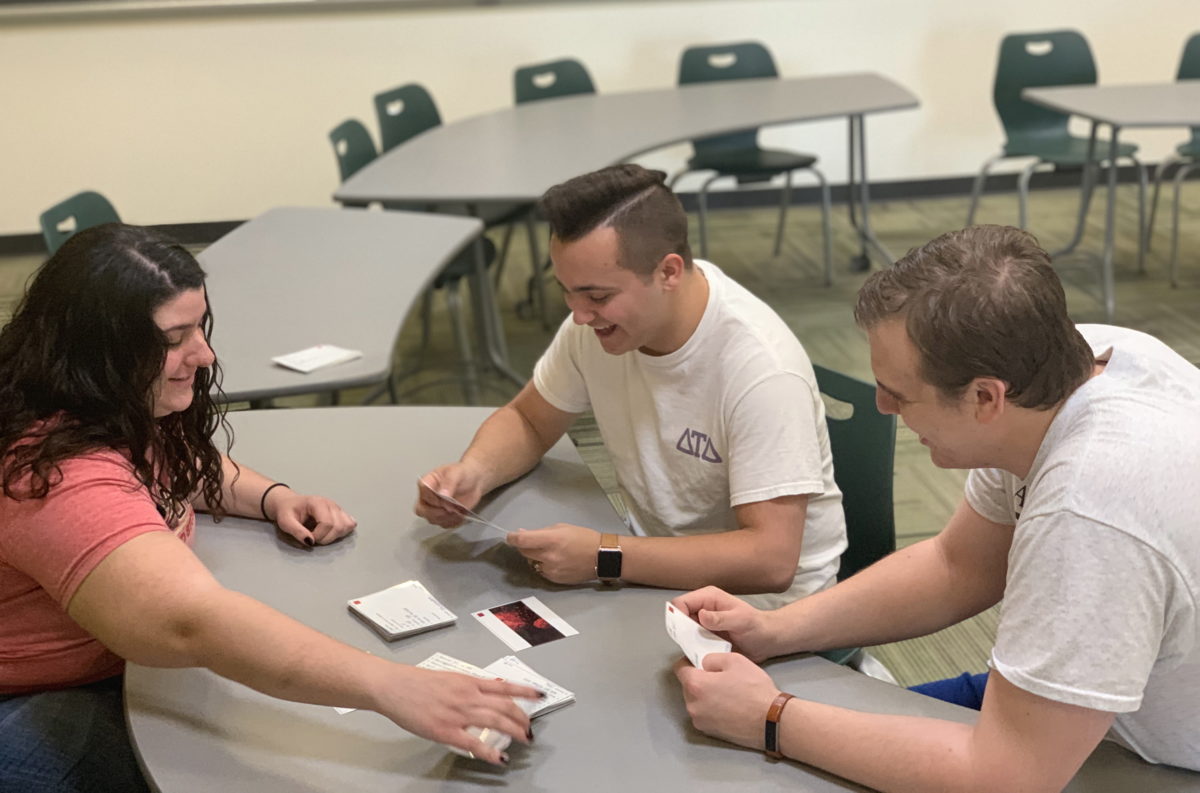
Allegheny College Students Learn From Measles Outbreak Simulation
Don’t be alarmed, but 43 members of the Allegheny College community were diagnosed with measles between March 12 and April 2.
If this were actually the case, there’d likely be a team of investigators from the Centers for Disease Control and Prevention swarming the campus. But this was just an epidemiology class exercise developed by Professor Rebecca Dawson to train her students in how real virus hunters track down victims of illness and try to protect those most vulnerable to the disease.
“We imagined what would happen if there was a measles outbreak on campus,” says Dawson. “Ethically, could we pull the student health records to see who was vaccinated? How would we actually go about containing such an outbreak? How do we protect those who are immunocompromised? What would we do if there were more than 40 cases reported on campus?”
Measles is making an alarming comeback in the United States and across the globe. Once thought to be eliminated in the United States, 764 cases of measles were confirmed in 23 states in 2019 as of May 1, including five in the Pittsburgh area in April. More than 34,000 cases were reported in Europe in the first two months of 2019.
“It’s different than it was 40 to 50 years ago when many children got the measles. With vaccinations, the disease was largely eliminated over a couple of generations. So its resurgence has bred a fear of the unknown,” says Dawson, who teaches in the Biology Department and the Global Health Studies Program. “For instance, there’s concern about bioterrorists weaponizing strains of the disease, and how can we prevent blindness and death that can result from the measles? The at-risk population is very different than it was 50 years ago.”
The simulated outbreak investigation aimed to answer the question: Is there an association between diagnosis of the measles and MMR vaccine status?
The class of 13 students in Biology 321 were given the following task: To track down 175 members of the College’s faculty and staff who volunteered to carry index cards that described them as potential measles cases. The cards listed a fictitious person’s demographic, medical and vaccination history, and other information. “Just like a real epidemiologist conducting a real outbreak investigation, they had to locate each individual on the list and collect the data card,” says Dawson.
The student investigators were precluded from contacting the volunteers via phone or email, nor were they allowed to track them down off campus. The student disease hunters had to visit the volunteers in their offices and retrieve the laminated index cards. They only knew that “patient zero,” who first reported the measles, was a 22-year-old male Allegheny student who lived in the North Village 2 residence hall and had sought treatment at Meadville Medical Center.

Before setting out on the measles hunt, however, the students had to develop a plan for locating each of the suspected cases. “This end-of-the-semester project provided real-life outbreak experience for them,” says Dawson. “They had to find as many of these people as they could. How will you determine the location and availability of each suspected case? How and where will you record this? How will you record when a suspected case is located and card received? How will you record who collected the card? Where will you keep the private health information of each case? When and how will input the data collected?”
Eventually, the students tracked down 130 of the cardholders in the time allotted them. They then had to compile their results and write a fictional report for the CDC’s Morbidity and Mortality Weekly Report, which is a weekly epidemiological digest for the nation. They also had individual tasks of communicating their findings to the campus and Meadville communities as if the outbreak had been real.
For instance, senior Alex Weidenhof wrote a fictional article for The Campus newspaper reporting, in part, “Relying on immunization records gathered from the Winslow Health Center and interviews with students to determine whether or not they have been diagnosed with measles, researchers found that 28 — or two-thirds — of those infected were not vaccinated with the MMR, while records did not clearly state the vaccination status of three other infected patients.”
The class also read “Beating Back the Devil: On the Front Lines with the Disease Detectives of the Epidemic Intelligence Service,” a book by Maryn McKenna about the CDC’s detective corps that tracks and tries to prevent disease outbreaks and bioterrorist attacks.
“The exercise hopefully taught them how to be disease detectives,” Dawson says. “It’s important that students interested in epidemiology have hands-on experience with an outbreak investigation.”
Photo Caption: Allegheny College “disease detectives,” from left, are Elise Rangru ’20, David Roach ’21, and Alex Weidenhof ’19.